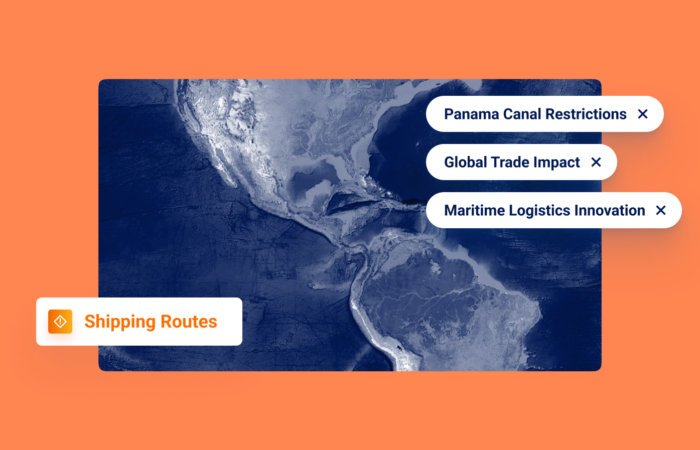What’s inside?
Actionable ocean freight visibility enables importers, exporters, and freight forwarders to increase efficiency, reduce costs, and improve overall performance via real-time insights from a single source of truth. This visibility makes strategic decision-making regarding your logistics and supply chain operations easier and more effective.
Here are three ways you can leverage actionable ocean freight visibility to streamline your logistics operations:
1. Automate Your Processes to Reduce Manual Effort and Increase Accuracy
It’s past time to move on from reliance on manual tracking processes, or ineffective “automated” processes, that create far too many hours of work with phone calls, emails, and spreadsheets, and result in inaccuracies.
By automating your processes with artificial intelligence and leveraging the most accurate information via real-time updates on shipments, you eliminate the need for manual checks, saving valuable time and resources. A Maritime AI™ system captures and updates real-time data without manual intervention, ensuring accuracy and reducing instances of human error.
Here’s how automation contributes to streamlining logistics operations:
- Automatic alerts about problematic cargo ensure efficient exception management. Organizations that waste time and human resources scanning all cargo shipments cannot take quick and timely action. Automated alerts cut the time it takes to analyze shipments to mere minutes, in an environment where split-second decision-making is vital.
- A shipment page with a real-time view of a single container, with automated tracking for both users and non-users, streamlines the tracking process for customers, shippers, consignees, and other key stakeholders, creating a single source of truth.
- By automatically detecting and logging transshipments, with visibility into shipment delays, you can see where your shipments are stuck, take immediate action, and attempt to quickly remedy the situation.
The automation provided by an AI ocean freight solution makes your logistics operations more efficient and responsive, and you can reduce operational costs, minimize errors, and increase productivity.
2. Save Money on Detention & Demurrage Fees
Over 40% of shipments are currently delayed. This costs freight forwarders, importers, exporters, and others in the supply chain ecosystem significant detention and demurrage fees. Preventing detention and demurrage fees is one way to reduce potentially crippling additional costs. Here’s how it can be done:
- Ensure accurate and clear communication of documentation, including bills of lading and shipping instructions to all involved parties, and ensure that all parties involved – including shippers, receivers, and carriers – are aware of schedules, deadlines, and operational requirements.
- Optimize cargo handling processes and coordinate among shippers, carriers, and consignees to expedite cargo movement and minimize delays at loading and unloading points.
- Adhere to scheduled pickup and delivery times to ensure prompt cargo collection upon arrival, and timely delivery.
- Identify potential delays early, enabling proactive measures to prevent demurrage situations.
- Anticipate potential delays by monitoring weather conditions, port congestion, or any geopolitical issues that might impact your route.
Actionable ocean freight visibility allows for data-driven decision-making that contributes to overall cost efficiency.
3. Choose the Right Corridor For Your Cargo
Choosing the right corridor for your cargo is a critical aspect of logistics optimization. It’s made easier if you have a general understanding of the efficiency levels and congestion statuses of the world’s leading container ports, including transit times, efficiency based on call duration by different container vessel sizes, overall pressure based on TEU capacity sailing into the ports, and more.
It’s important to understand delay factors that impact transit times and can predict the transit time of a container from A to B. Disruptive factors include:
- Volumes and trade patterns: an evolution from one to multiple suppliers, and a mix of sourcing origins for the same products, has been adopted since the COVID-19 pandemic, to reduce dependence and risks. It challenges the global supply chain, and demands additional port capacities.
- Landside congestion: changes to flows result in severe congestion in certain ports that were once considered efficient. A lack of landside infrastructure, such as warehousing and trucking, can cause bottlenecks of cargo overflows at ocean terminals.
- Port disruptions: Large port shut-downs for long periods create huge backlogs and increase average transit times, and force shipping lines to shift capacities, which can result in schedule irregularities.
When choosing a trade lane and corridor, there are four key considerations:
- The proximity of origin to useful gateway ports
- Availability of cost-efficient landside transport capacities
- Availability of cost-efficient ocean transport capacity
- Import gateway most likely to deliver a stable predictable flow and landside transit to the destination
With so much data available around ocean freight shipment, an AI-driven ocean freight solution can offer invaluable assistance with simplifying the process and creating cost-saving efficiencies.
And automated processes play a crucial role in an efficient and cost saving decision-making process.
A Maritime AI™ platform can offer insights based on machine learning models to generate real-time accurate ETA predictions and insights for entire global fleets of container vessels. It continuously calculates congestion levels at all container ports, and provides real-time visibility and port performance insights, including reasons for delays.






